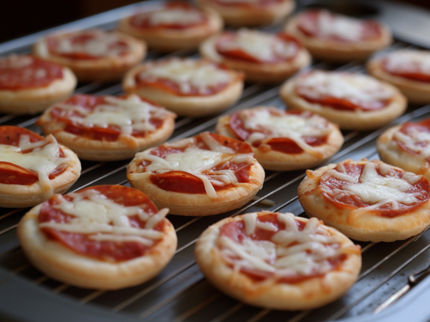German frozen food market remains on course for success
Strong performance in the first half of 2025
Advertisement
German frozen food sales will continue to develop positively in 2025. This is what the German Frozen Food Institute e. V. (dti) expects in its current market assessment for frozen food for the current year 2025. The dti forecasts sales growth in the overall market of 3.2% to 4.268 million tons. For total sales in 2025, the dti is forecasting growth of 5.8% to 23.653 billion euros.
"Demand for frozen food in the food retail trade (LEH) and among home services has been very robust," says dti Managing Director Sabine Eichner. "Frozen food offers consumers an attractive service package and real added value with freshness, nutrients, shelf life and flexibility at an attractive price. With a consumer reach of 96%, frozen food has a firm place in almost every household. In the out-of-home market (OOHM), the use of frozen products is indispensable. Frozen food is vital as a high-quality solution for many catering businesses that have to hold their own in a difficult environment."
70 years of frozen food in Germany: the success story continues
In the anniversary year "70 years of frozen food in Germany", in which the industry celebrates the presentation of the first frozen products for the German food trade at Anuga in Cologne in 1955, the category continues to show its best side.
According to calculations by the dti for frozen food sales in food retail and frozen food home services, the market will grow by 2.1% to 2.059 million tons in 2025. Frozen baked goods, frozen fish, frozen ready meals and frozen potato products performed particularly well in the first half of 2025. The development of frozen fruit was particularly strong with growth of around 14%. The frozen pizza and frozen meat product groups remained stable. There was a negative trend for frozen snacks, frozen vegetables/herbs and frozen alternatives.
The dti expects sales of frozen products in food retail including home services in Germany to grow by 3.6% to €12.189 billion in 2025. The reason for this is the further slowdown in inflation.
"TK is holding its own as an important fresh produce category in the food retail sector," says dti Managing Director Eichner. "Our representative consumer surveys, which we regularly carry out with the market research institute Innofact, show time and again that the most important aspects when it comes to choosing food are its freshness and healthiness, the naturalness of its ingredients and ease of preparation. This corresponds exactly to the profile that the frozen food range offers in a wide variety for every taste. Together with a good price-performance ratio, which is also positively reinforced by the long shelf life and low throw-away rates, customers are increasingly turning to frozen products."
Out-of-home catering solves challenges with frozen food
The AHM continues to find itself in a difficult environment in 2025: according to the market research institute Circana, the food service industry recorded a further decline in visitor numbers in the first half of the year, which hit waiter service restaurants particularly hard. Turnover and average receipts per guest did increase compared to the last twelve months. However, restaurant spending is currently only just above the level of 2019, i.e. before the coronavirus pandemic.
TK is benefiting from the challenges facing the food service industry: This is because chefs prefer to use fresh products. Fresh-frozen products make chefs' work much easier without having to compromise on quality or creativity. Frozen food is an all-round talent, because it provides solutions thanks to a wide range of convenience levels. Frozen products make kitchen processes more predictable and leaner, which helps with the ongoing shortage of skilled workers.
This is also confirmed by the current dti study "Nutrition 3.0 - Community catering between staff shortage and nutritional turnaround", for which around 200 catering managers from company catering, care (hospitals, nursing homes) and education (daycare centers, schools, universities) were surveyed on the current situation in community catering.
The dti is therefore forecasting significant growth of 4.2% for the sale of frozen food in the various catering sales channels in 2025. The sales volume in 2025 is therefore expected to rise to over 2.209 million tons. In terms of turnover, the dti expects an increase of 5.8% to a value of 11.464 billion euros.
A complete picture of the development of the overall TC market in 2025 will not be available until April 2026. The dti will then publish the data for the dti sales statistics 2025, which are based on its own industry survey.
Note: This article has been translated using a computer system without human intervention. LUMITOS offers these automatic translations to present a wider range of current news. Since this article has been translated with automatic translation, it is possible that it contains errors in vocabulary, syntax or grammar. The original article in German can be found here.






























































